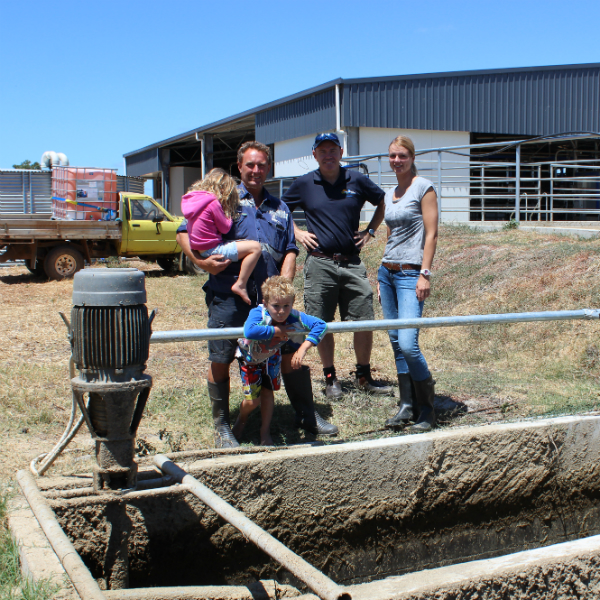
A partnership between the Department of Water and Environmental Regulation, Western Dairy, and Murdoch University environmental honours student Laura Senge has added an independent voice to a dairy industry initiative to improve effluent system management.
DairyCare is a $2.4m Regional Estuaries Initiative and Revitalising Geographe Waterways funded project supporting dairy farmers to design, install and maintain fully closed effluent systems in order to reduce nutrient loss off dairy farms and improve water quality of regional estuaries.
While DairyCare project officers Sam Taylor and Dan Parnell have been reviewing systems and designing upgrades for qualifying farms, a scholarship has enabled honours student, Laura Senge, to design a Zero Waste Discharge system on one of the DairyCare farms.
Its features include recycled water for yard flood-wash, a 6.4ML effluent storage pond, a calculated distribution area for spreading nutrient collected in the effluent system and a roof on the dairy yard to divert and collect rainwater and reduce heat stress on cows.
“My case study farm had a current freshwater usage of 53kL per day for 500 cows, which is 30 per cent above industry benchmarks. The hydrants used for the yard wash took up 32kL of the 53kL,” Laura said.
“So there was lots of opportunity on this site to engineer solutions that would significantly reduce the freshwater use, which can greatly reduce the amount of effluent to be managed.”
Laura’s thesis quoted a payback period of 6.2 years but DairyCare project officer Sam Taylor maintains this could be reduced by taking into account the reduced fertiliser needs on paddocks being treated by re-used effluent.
“Significant quantities of phosphorus, potassium and to a lesser degree nitrogen are collected in effluent systems,” said Sam.
“It makes sense to capitalise on this captured nutrient and put it back onto paddocks where it can help grow grass and crops, reducing the amount of purchased fertiliser that is required,” he said.
“The message from our work is that farmers need to ensure they are distributing nutrient appropriately across a large enough area, otherwise you are simply shifting the problem from the pond to the paddock,” Laura added.
“Having an appropriately sized application area for the effluent will reduce the environmental impact and reduce fertiliser requirements for that land area, yet there are very few appropriately sized application areas used for effluent in WA,” concluded Sam.
The DairyCare project funds enable qualifying farms to secure up to $60,000 in capital works funding, on the proviso the farm contributes on a 50:50 basis through a combination of cash and in-kind support.
For more information on the DairyCare project, contact Western Dairy’s Dairycare project manager – dan.parnell@westerndairy.com.au or telephone 0467 556 542.
